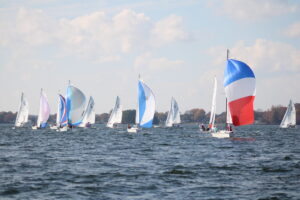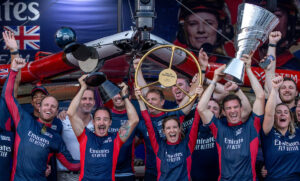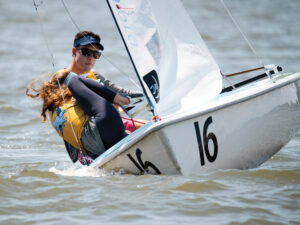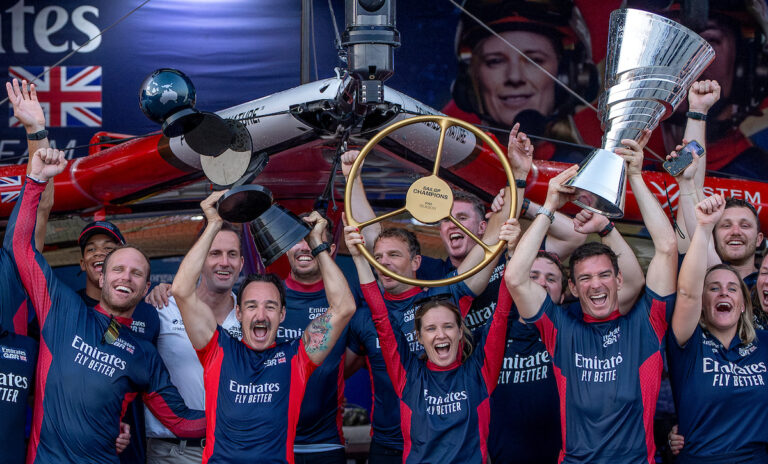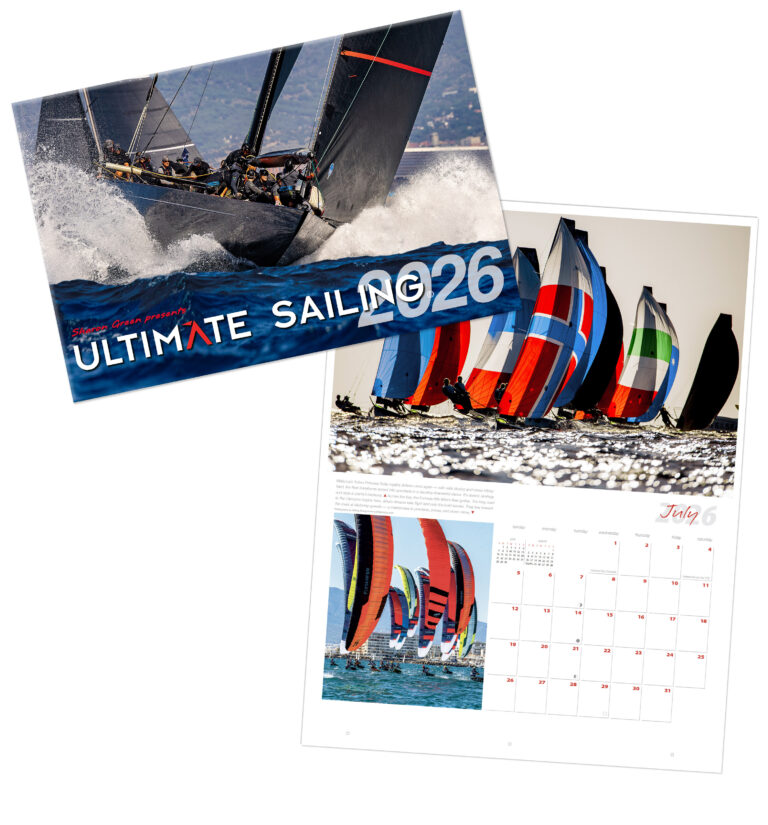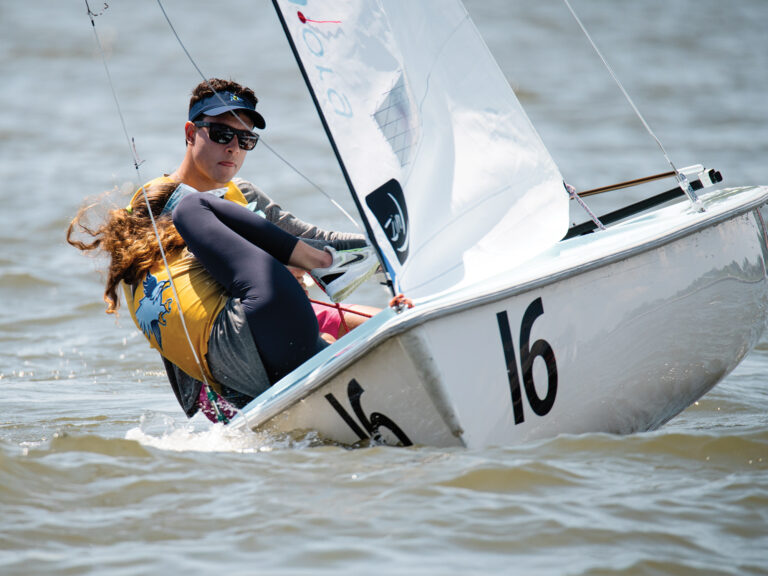
Brad Webb, on the job
Brad Webb is one of Oracle Racing’s longest standing crew members. He signed his first contract with the team in November 2000. He was bowman on BMW Oracle Racing ‘s monster tri USA-17 that was victorious against Alinghi in the 33rd challenge for the America’s Cup. A Kiwi now living in the San Francisco Bay Area, Webb was on Oracle Racing’s AC72 when it recently capsized – and wrecked – on the Bay.
Have you figured out why the capsize occurred?
It wasn’t one contributing factor and no real technical issue. At 28 knots it was the windiest bearaway we’d ever done. We’d done a number of runs down the Bay where we were flying – literally – and having a ball. We just hadn’t taken into account that it was just getting windier and windier. We were doing 33 knots when we just stuck the bows in and over we went. We’ve analyzed the rate of the turn, the apparent wind and all the other data that was being fed off the boat at the time and we’ve taken a good look at that bearaway compared to the five previous ones that day.
Perhaps we would have had more lift on the boards or borne away further or had a faster rate of turn…there’s no real standout for the cause of it—just a number of things that were due to us not knowing the boat as well as we ultimately will. The one encouraging thing is that through all this the boat was reliable, so know we’ve certainly got the hardware to go out and win. But it was only our eighth day on the water and we were still learning.
What was the ultimate damage?
Obviously the wing is a write-off. The big pieces and the flaps and the frame were scattered across the ocean. The only thing on the main element that was left was the spar connected to the platform, which even at that time was in pretty good shape, but once the rig broke and she fully capsized, with the crashing and bashing from the ebb and swell, that’s when a lot of the damage happened—the fairings blew off—and we ended up with part of the main element on top of the upturned platform which did a lot of damage to the hull.
What are you rebuilding?
We won’t reconstruct the first wing at this point; all our effort is going into wing 2. Most of those elements are under construction in Auckland and the plan is to have that here in January, so we’ll have wing 2 on boat 1. Boat 2 is humming along with the same amount of manpower going into that. Its schedule is as it was with a plan to launch sometime March or April. The team’s a long way into engineering wing 3. Most of the elements are done in NZ but construction of it takes place here obviously because they’re big to move. But, we are a wing down, which is a disadvantage.
You’re keenly observing ETNZ’s progress?
They’re sailing and we’re not! We all know that time on the water is huge and they’re definitely ahead of us as far as that goes. We’re keeping an eye on them, what they’re doing and trying to learn from them and what we may emulate or compare to our ideas. It’s pretty painful but all we can do is sit and watch. We’ll be doing the same with Artemis as they get going on the Bay.
How can you benefit from this time away from the 72?
We’re continuing with our testing program on the 45s, which has a very close correlation with the 72. We were going to do mods to the boat anyway so it’s now all hands on the tools. We’re all under this pressure together, so it’s an opportunity to come together as a team and dig ourselves out of this. We’ve learned a huge amount about the boat and sailing these boats in big breeze.
The biggest thing that’s come out of it is we’ve shared with all the teams how to respond more effectively in the situation especially in San Francisco which is extremely unforgiving. The opportunity for injury is huge on these boats and we’ve all got friends on the other teams so that’s important to us. It was huge that nobody was injured and I don’t think a day goes by where we aren’t all thankful for that.
Will you train with Artemis?
I have no idea at this point. We don’t know what their program is. Traditionally the challengers have kept to themselves; but if that’s all we’ve got, and the other teams haven’t arrived yet, then I’m sure there may be an opportunity for us to go out and maybe do a couple of days together.
Will winter Bay weather heed your ability to get time on the water?
Not really, we still get some great winter days here with enough breeze for us to go out and test things. Obviously it’s not the same as July to September but we’ll pick and choose our days and get as much from it as we can.
What’s your specific role on board these days?
The roles that we used to have on the monohulls have kind of gone away. We’re all grinders now so my primary position is grinder. We haven’t really nailed it down; there’ll be a lot of job sharing. Each cockpit has a different role whether it’s trimming or grinding hydraulics or grinding the jib or the code zero or grinding the wing, we’re still in that phase of figuring out where people need to go, where we need the most power at any given time.
The great thing about this boat was that within a couple of days we were already throwing it around the race course whereas as you know with the trimaran we didn’t start doing that until about three weeks before the Cup. The boats are very raceable which is extremely exciting. It’s really turned into this very physical sprint, especially given the short length of the racecourse, It’s a very physical, high energy, radical boat that we’re all going to be a part of getting around the course.

